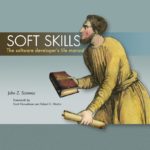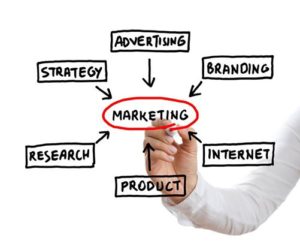Introduction
I recently read the book Soft Skills – The Software Developer’s Life Manual by John Z. Sonmez. Actually, I read it twice. It is a gold mine of great advice ranging from topics on career development to fitness to finances, all geared towards the point of view of a software developer. I highly recommend this book to all developers. I would even go so far as to say this book is worth it for anyone to read. While not all of the advice can be directly translated to other professions, most of the general ideas and themes are transferable.
So go buy it. Now. Seriously.
Review by Section
 Ok, If I didn’t convince you yet, I’ll break the book down into sections and review each one in turn. This is quite easy actually, as the book itself is broken down into 7 main sections, each with many chapters. The chapters are the perfect size to easily digest, ranging from 10-20 minutes of reading. This allows even the busiest person to squeeze a chapter or two in every day (there are 71 chapters and 4 appendices, so reading a couple of chapters per day is necessary).
Ok, If I didn’t convince you yet, I’ll break the book down into sections and review each one in turn. This is quite easy actually, as the book itself is broken down into 7 main sections, each with many chapters. The chapters are the perfect size to easily digest, ranging from 10-20 minutes of reading. This allows even the busiest person to squeeze a chapter or two in every day (there are 71 chapters and 4 appendices, so reading a couple of chapters per day is necessary).
Section 1: Career
 This section is by far the largest in the book, coming in at 18 chapters.
This section is by far the largest in the book, coming in at 18 chapters.
The overall theme of this section is that you own your career and you should treat it like a business. For example, as a software developer you are providing a service to a client: creating software. Even if you work as an employee for a company, that just means you have a single client that provides all of your revenue.
Like all businesses, you should be creating goals and tracking them. This is actually a recurring theme in the book. Without goals, how do you define success? You should figure out where you want to take your career, make tangible goals to get there and then go after those goals. As you hit your goals (or sometimes miss), you will likely require tweaking as you go. You may also want to take your goals in a different direction as your career takes shape. This is why tracking and reviewing goals regularly is necessary.
John also explores the three main employment choices for software developers: The employee (i.e. working for a corporation), the independent consultant and the entrepreneur (i.e. the startup founder). He goes over the benefits and drawbacks of each and then spends a few chapters how to get the most out of each. John even covers strategies to transition from one to another.
Also peppered into this section are some useful chapters on specializing (what kind of a developer are you… while also not getting religious about specific technologies), people skills, resumes, interviews and working remotely (survival guide).
Section 2: Marketing Yourself
 Section 2 flows nicely from the previous section. The main theme is that a business needs to market itself in order to be successful. If you treat your career as a business, then it stands to reason that you should market yourself. John includes a nice quote by Seth Godin: Marketing is a contest for people’s attention.
Section 2 flows nicely from the previous section. The main theme is that a business needs to market itself in order to be successful. If you treat your career as a business, then it stands to reason that you should market yourself. John includes a nice quote by Seth Godin: Marketing is a contest for people’s attention.
This section covers what marketing yourself is (and debunks some of the bad connotations with this idea), why you should market yourself and how.
What is marketing yourself? Essentially it is building a brand that represents a service you provide and connects it with people who want what you are offering.
Why is marketing yourself important? This one should be obvious, but John uses a couple analogies with rock bands vs. cover bands and celebrity chefs vs. equally skilled, but unknown chefs. If you don’t market yourself, nobody knows you exist. If nobody knows you exist, many opportunities will pass you by.
How can you market yourself? There are many ways that John covers, ranging from creating a blog to podcasts to speaking engagements. There are many more ideas he shares, going into detail for each. To be honest, John’s book (and his free email course on blogging) is the main driving force behind me finally committing to this blog. I want to share things I have learned, give back to the community and do my best to provide value to those who read my posts.
Which brings me to a very import topic John covers in this section. Your primary goal should be to add value to others.
Included is another great quote by Albert Einstein: Try not to become a man of success, but rather try to become a man of value.
Section 3: Learning
 As someone who is a firm believer in a lifetime of learning, this was one of my favourite sections.
As someone who is a firm believer in a lifetime of learning, this was one of my favourite sections.
John breaks this section into a few key areas:
First he focuses on learning how to learn (or how to teach yourself). He breaks this down into a decent step-by-step process that he successfully used to create a barrage of quality pluralsight courses. (UPDATE: Check out this article about how much John earned from created these courses. Wow!)
Next, John spends a few chapters covering the importance of looking for mentors, becoming a mentor and teaching in general (a very important part of the learning process is to teach).
Finally, the last chapter covers gaps in your knowledge. Specifically, identifying gaps that may be limiting you and filling them in.
Section 4: Productivity
 This section is probably the beginning of where this book really speaks to people of any profession. Productivity is key, no matter the landscape.
This section is probably the beginning of where this book really speaks to people of any profession. Productivity is key, no matter the landscape.
There are some interesting techniques, strategies and tools that John introduces to you in this section that he uses himself (e.g. the Pomodoro Technique, which I decided to try and now love) to enhance your productivity and focus. He also covers multitasking dos and don’ts, addressing some of the common issues that actually reduce your productivity.
This section also covers the importance of routines, breaking things down and developing good habits in order to stop wasting your time, keep your productivity up and push through burnout.
There are two great quotes in this section that deserve mention:
Aristotle: We are what we repeatedly do. Excellence, then, is not an act, but a habit.
Creighton Abrams: When eating an elephant take one bite at a time.
Section 5: Financial
 Of all the sections I was most surprised by, this was the one. Pleasantly surprised. I went in with the expectation that I’d be bored to tears (I even considered skipping it), but found the financial information to be very interesting.
Of all the sections I was most surprised by, this was the one. Pleasantly surprised. I went in with the expectation that I’d be bored to tears (I even considered skipping it), but found the financial information to be very interesting.
This section covers a few things that you might expect, such as salary negotiation, retirement savings plan strategies etc. However, John turns out to be quite a savvy investor (stocks, options, real estate). He takes you through a quick whirlwind introduction of how these types of investments work and gives you some ideas from personal experience.
If you’re worried that listening to any of John’s ideas or advice are not worth your time, keep in mind that he was able to retire (as in doesn’t have to work, even though he still chooses to do so) at the age of 33! He doesn’t have all the answers, but taking his advice into account is a smart move.
Section 6: Fitness
 I found this section quite useful too, as I’ve always been a bit of fitness buff. Although lately these days with 4 young kids, I tend to have less time for such things.
I found this section quite useful too, as I’ve always been a bit of fitness buff. Although lately these days with 4 young kids, I tend to have less time for such things.
That is where this section came in handy. Not only does John cover fitness theory, workout ideas, goal setting (there’s that goal theme again) and nutrition, but he also covers some good motivation ideas and tech gear for fitness geeks. He also shows you some ways to burn extra calories while working (e.g. standing and/or treadmill desks).
Now you may ask what qualifies John to give advice on fitness and nutrition. He’s not a certified personal trainer, nor does he have a degree in nutrition. He does bring experience from competing in bodybuilding competitions as well as coaching people to reach their fitness goals. For me, that’s enough.
As an aside, you should check out John’s podcast Get up and Code.
Section 7: Spirit
 This section can best be summed up by a quote directly from the book:
This section can best be summed up by a quote directly from the book:
This section is all about that intangible connection between the mind and body that motivates us to action and ultimately controls whether or not we live up to our potential or fall back helplessly believing ourselves to be a victim of circumstance. In this section, my goal is to equip you with the tools to conquer the greatest enemy you will ever face—yourself.
There are some interesting sections on facing failure, building a positive self image and even some thoughts on relationships.
One chapter contains a list of books that John has found invaluable ranging from self-help and inspirational books to software development books to investment books. For each book he adds a little summary of what the book is about and why he considers it worth the read. There are definitely some gems I’ve added to my to-read list.
Appendices
Once you finish the book, there are 4 appendices to cover a few of the earlier topics in greater depth (basically some more background information). The appendices are as follows (and are pretty self-explanatory):
- If you can write code, you can understand finances
- How the stock market works: Rules of the system
- Garbage in, garbage out: Diet and nutrition basics
- How to eat healthy: Pizza is not a food group
Summary
So that’s it. Hopefully by now you see the value in John’s book. What I like about Soft Skills, other than the content, is that John presents the material matter-of-factly as someone who has personally experienced most everything he talks about. He is sharing his experiences with you so that you can learn from his mistakes and his successes which you can then use to shortcut your way to the latter.

Thanks for the fantastic review. I had been debating whether to read this book, but your review put me over the edge.
No worries Ed. You won’t be disappointed.